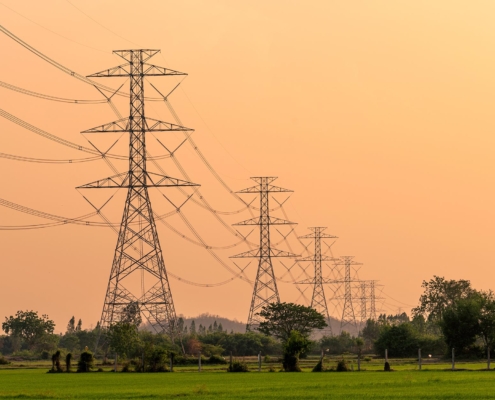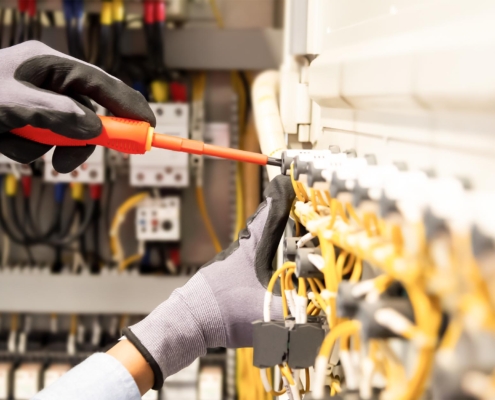 https://www.lwwco.com/wp-content/uploads/2024/02/Electrical-lines-in-rural-area.jpg
1250
2000
Abstrakt Marketing
/wp-content/uploads/2022/10/Lyle-Logo.png
Abstrakt Marketing2024-02-08 10:00:002025-07-10 13:26:28The Top Challenges Facing Rural Electric Cooperatives
https://www.lwwco.com/wp-content/uploads/2024/02/Electrical-lines-in-rural-area.jpg
1250
2000
Abstrakt Marketing
/wp-content/uploads/2022/10/Lyle-Logo.png
Abstrakt Marketing2024-02-08 10:00:002025-07-10 13:26:28The Top Challenges Facing Rural Electric CooperativesThe Top Challenges Facing Rural Electric Cooperatives
Rural electric cooperativesare integral in bringing power to distant communities and are key players in the energy industry. However, they face multiple power supply challenges that can hamper their operations and effective service provision.
What Are Rural Electric Cooperatives?
Rural electric cooperatives, commonly referred to as electric co-ops, are not-for-profit, member-owned utilities that supply electricity to rural areas in the United States. They have a different structure from conventional investor-owned utilities since they are governed by the consumers they serve.
These cooperatives emerged in the 1930s and 1940s when profit-seeking electric companies did not consider providing electricity to smaller communities and farms profitable. The Rural Electrification Act played a pivotal role in funding the electrification of these underserved areas.
Over 900 rural electric co-ops serve 56% of the nation’s territory. They operate in 47 states and supply electricity to 42 million people in rural areas. Unlike other electric utilities, their territories are more extensive and have fewer customers per mile of power line.
Economic Limitations and Funding Difficulties
Rural electric cooperatives navigate a landscape of financial challenges, delivering electricity across sparsely populated areas at higher costs per user than urban utilities. With typically older populations, higher poverty rates, and less disposable income in these rural areas, coops have less opportunity to generate revenue or secure financing.
Cooperatives are committed to providing affordable rates for their members, yet they must work within tight budgets to maintain reliable service. This economic balancing act is a continuous struggle these cooperatives face in their operations.
Aging Infrastructure and Demand for Modernization
Many cooperatives are operating with aging infrastructure in dire need of modern upgrades or complete replacement. This older infrastructure includes everything from substations to power lines. At the same time, there is a growing need for modernization driven by increased energy demand, the impacts of climate change, and a surge in residential solar installations.
Rural electric coops, focused on meeting member needs rather than satisfying shareholders, face significant hurdles in financing these updates while still keeping service affordable for their consumer members.
Expensive and Complex Regulatory Compliance
Complying with the multitude of regulations from different governing bodies is a complex and costly part of operating an electric utility. While large utilities might have entire departments dedicated to compliance, rural electric coops often operate with much smaller teams and must allocate limited resources to these administrative tasks.
Outsourcing or hiring consultants to help navigate ever-evolving regulations can be expensive. Although streamlining compliance procedures may help cut costs, meeting all reliability, safety, environmental, and performance standards frequently involves tough choices for coops.
Adapting to Rapid Technological Changes
The utility sector is witnessing fast-paced technological advancements that affect how energy is managed and customer expectations. However, rural electric coops often find it difficult to assess and adopt new smart grid technologies due to constrained budgets.
Investment in technologies like advanced sensors for outage management, updated software for improved efficiency, and systems for solar storage integration can bring significant advantages. However, these require considerable initial expenditure and may take time to show a return on investment.
Keeping up to date with promising technological improvements can help cooperatives enhance efficiency and service reliability without incurring prohibitive costs. Collaborative efforts with industry associations, research bodies, vendors, and fellow utilities can expedite the technological upgrade process for rural electric cooperatives.
Innovative Financing Models for Rural Electric Cooperatives
Rural electric cooperatives operate under tight financial restrictions, often leading to funding challenges. However, innovative financial arrangements can offer a lifeline. Among them are collaborations with banks to provide customers payment plans that spread out the costs, government-backed loans and grants with favorable terms aimed at rural infrastructure improvements, and the implementation of community solar projects allowing members to buy into larger, shared solar installations.
Such creative financing solutions empower rural electric coops to make the necessary updates to their systems, maintaining both affordability and reliability for their community of users.
Investing in Infrastructure Modernization and Renewables
For rural electric cooperatives, modernizing dated grid systems is critical to enhance service reliability and cater to the growing energy needs. Priorities for infrastructure investment include deploying smart grid technologies such as automated metering for quick outage detection, installing resilient power lines to minimize storm damage, and renewing poles, transformers, and substations that are past their prime.
Simultaneously, pivoting towards renewables like solar, wind, and battery storage can revolutionize the rural energy landscape, offering sustainable solutions that are environmentally friendly and cost-effective in the long run.
Partnering and Collaboration as a Step to Overcome Regulatory Challenges
The web of regulations that rural electric cooperatives must comply with presents a daunting and costly challenge. Forming strategic alliances opens the door to sharing resources and know-how, making the regulatory maze more navigable and less burdensome.
Electric co-ops can also forge partnerships with IT firms, construction companies, unions, research organizations, and other experts to seek advice and training. This collaborative approach can streamline meeting regulatory requirements without overextending financial and human resources.
Workforce Development and Training Initiatives for Sustainable Future
The departure of experienced employees to retirement creates a talent void in rural electric cooperatives, requiring a focus on cultivating a new workforce. Implementing targeted training initiatives is critical, such as introducing compensated internships and apprenticeships to capture the interest of potential recruits, consistent safety training and technical skill enhancement programs, and offering financial support for further education.
These efforts are designed to nurture and develop a knowledgeable and skilled workforce to steer rural electric cooperatives toward a sustainable future.
Leveraging Technology for Greater Efficiency and Resilience
Adopting cutting-edge technologies such as artificial intelligence, machine learning, and advanced data analytics can significantly uplift the operational efficiency of rural electric co-ops, even with limited personnel. These technologies can provide deeper insights for risk assessment and aid in predicting issues before they arise.
Investing in such technological advancements also strengthens the coops’ resilience against climate-induced threats like storms, floods, and wildfires, thus reducing the likelihood of extended power failures.
Discover how the Lyle W. Williams Company can empower your rural electrification efforts with our industry expertise and strong collaborative networks. Our dedication to connecting manufacturers, distributors, and end-users ensures cutting-edge electrical solutions reach the communities that need them most.
The Role of Cooperative Efforts in Rural Electrification Projects
Bringing electricity to far-flung communities is a collaborative venture that hinges on the partnership of various experts and organizations, each applying their unique strengths and perspectives. Governments are vital to this effort. They lay out the rules and encourage advancements by creating investment-friendly environments. They provide incentives and sometimes even direct funding to help get rural energy projects off the ground. Nonprofits also play a key role, advocating for those who often don’t have a large say and innovating to meet the specific challenges facing rural electric cooperatives.
Local communities are also essential in this process. Their active participation ensures the solutions are effective and lasting, giving them a stake in the care and future of their local energy systems. Their insights are crucial for clearing the unique hurdles these projects might face.
The private sector cannot be overlooked either. They bring fresh technology and substantial funding, developing smart, cost-effective ways to deliver power to remote locations. Working together lightens the financial load for everyone, making essential infrastructure projects more achievable.
Power Rural Electrification With Industry Savvy and Collaborative Partnerships
Lyle W. Williams Company uses over 50 years of industry expertise as an electrical manufacturer representative to enhance the electrification of rural areas. We offer a collaborative approach as a bridge between manufacturers, distributors, and end-users. We ensure that state-of-the-art electrical products are effectively marketed and delivered, fostering sustainable and robust rural electrification projects.
Ready to navigate the electrical market and overcome the challenges facing rural electric cooperatives? Reach out today.
Share This Post
More Like This
 https://www.lwwco.com/wp-content/uploads/2024/02/Electrical-lines-in-rural-area.jpg
1250
2000
Abstrakt Marketing
/wp-content/uploads/2022/10/Lyle-Logo.png
Abstrakt Marketing2024-02-08 10:00:002025-07-10 13:26:28The Top Challenges Facing Rural Electric Cooperatives
https://www.lwwco.com/wp-content/uploads/2024/02/Electrical-lines-in-rural-area.jpg
1250
2000
Abstrakt Marketing
/wp-content/uploads/2022/10/Lyle-Logo.png
Abstrakt Marketing2024-02-08 10:00:002025-07-10 13:26:28The Top Challenges Facing Rural Electric Cooperatives
Exploring Cutting-Edge Solutions in Commercial Electrical Contracting
Electrical
About Us
Lyle W. Williams Company is an electrical manufacturer representative with over 50 years of experience in the field. We build electrical pathways to elevate our industry partners.
